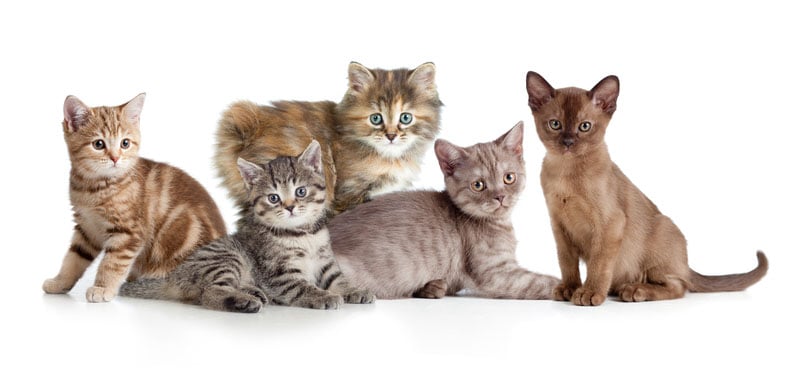Are you ever amazed at how your cat acts like a person? If only we could protect our cats from developing the same diseases as people. Unfortunately, cats can develop diseases that are also common in humans, such as heart disease. Aging is the most common reason cats develop a heart condition, but other factors like genetics and heartworms can also lead to heart disease.
Feline Heart Disease FAQs

Genetics play a large role in heart disease. Persians, other oriental breeds, Ragdolls, Maine coons and Devon Rex appear predisposed to hypertrophic cardiomyopathy, says the American College of Veterinary Internal Medicine, though any breed of cat can develop this condition. These at risk breeds should be screened early and often.
An incomplete meal plan (especially one that relies exclusively on fish) is a risk factor for cardiomyopathy, as well. Make sure to talk to your vet about ensuring your cat gets a well-balanced meal.
Can you prevent heart disease in cats?
In some cases, you can. Making sure your kitty gets balanced, complete meals is fundamental to preventing heart disease. And the use of a monthly heartworm preventive can protect you cat from heartworms.
How does exercise help with heart health?
A healthy weight is crucial to an energetic and enjoyable life, but avoiding obesity is especially important for those with heart disease. Cats may experience a heart problem more severely if they’re carrying excess weight. Take time each day to play with your cat. Along with a healthy diet, a few minutes of exercise each day is enough for your cat to help keep the weight off and help fuel their heart health.
Does nutrition play a role in heart disease prevention?
Apart from complete and balanced meals in quantities tailored to your cat’s caloric needs (to keep her at a trim weight), there’s no specific meal plan recommended for prevention. If treatment becomes necessary, however, ask your vet if you’ll need to make any changes to your cat’s food to help manage the disease. In some cases moderate sodium restriction is helpful.
What else should I know?
Diseases like hyperthyroidism, hypertension and anemia can all affect the heart’s fundamental workings. It’s important to recognize these early and manage them carefully. If your cat suffers from a combination of heart disease and another health condition, treating one issue can sometimes alleviate the other.
Some cats with heart disease can develop a painful, paralyzing condition called saddle thrombus if a blood clot develops in the heart and moves out of the aorta. The clot blocks blood flow to a cat’s hind legs, making them cold to the touch or even bluish under the fur. Bring your cat in for regular preventive care exams to have her heart sounds and heart rhythm checked, and seek emergency care immediately if she starts dragging her back legs.
Monitoring Cat Heart Health
The most important thing to know when it comes to monitoring heart health in cats is that veterinarians can often identify heart disease before symptoms occur. This is one reason why the annual physical exam is so important. A heart murmur, audible via stethoscope, is the most common clue. Irregular heartbeat rhythm is another. These are things that you would not notice at home. Blood tests and a complete physical examination at least once a year are highly effective at screening your pet for other diseases that can affect her heart. And early diagnosis, along with proper treatment and monitoring, can prolong the length and quality of her life.
We all know it can be hard getting a cat to the vet, but can you think of a better reason than keeping her heart in good shape? Watching out for your kitty’s cardiac well-being will keep her around to love you for that much longer.
